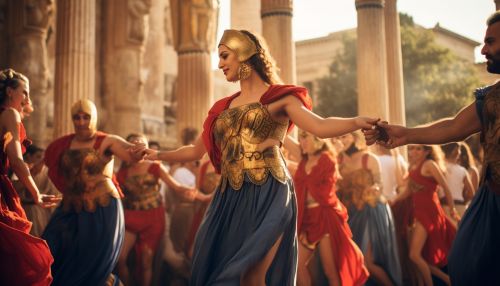Dance in ancient Greece
Origins of Dance in Ancient Greece
Dance in ancient Greece was one of the major forms of expression and was integrated into everyday life and events. The origins of dance in ancient Greece are lost in the mists of prehistory, but it is believed to have been heavily influenced by the dances of the Minoan and Mycenaean cultures that preceded it.


Types of Dances
There were numerous types of dances in ancient Greece, each with its own significance, style, and function. These included the Pyrrhic, a fast-paced war dance performed by warriors; the Gymnopaidiai, a dance performed by naked youths; and the Kordax, a comedic and often obscene dance performed in the theatrical comedies of the time.
Role and Significance
Dance played a crucial role in the social and religious life of ancient Greece. It was used in religious ceremonies, public festivals, private gatherings, and as a part of military training. Dance was also a way to express human emotion and tell stories. The Greeks believed that dance improved both physical and emotional health.
Dance and Religion
In ancient Greece, dance was closely tied to religion. Many dances were dedicated to gods and goddesses, like the Dionysian dances performed in honor of Dionysus, the god of wine, fertility, and ecstasy. These dances were often ecstatic and frenzied, reflecting the nature of the god himself.
Dance and Theatre
Dance was an integral part of ancient Greek theatre. The chorus in a Greek drama would often communicate through dance. The movements of the chorus represented the communal voice and contributed to the overall spectacle of the theatre.
Dance Education
Dance education was a significant part of a child's upbringing in ancient Greece. Boys were taught to dance from a young age as part of their education in music and rhythm. Dance was also used to build physical strength and endurance, as well as to instill discipline and teamwork.
Conclusion
Dance in ancient Greece was more than just a form of entertainment. It was a vital part of Greek culture, deeply embedded in society, religion, and education. It was a form of communication, a means of expressing emotion, and a way of telling stories. Its influence can still be seen today in the dances of modern Greece and in the wider world of dance.
